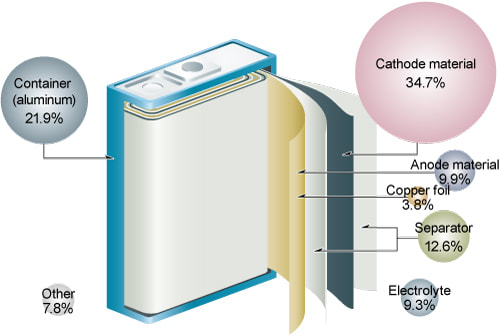Battery Materials: Detail About Lithium Ion Batteries

Battery Materials| Image Resource : rohinipatilblog.weebly.com
Energy storage plays an indispensible role in our present day life. Our gadgets, other appliances and now even cars are becoming dependent on stored energy in the form of batteries. The automobiles have batteries as a secondary option besides gasoline. Some cars run solely on battery and are called Electronic Vehicles (EVs).
The main battery component of these batteries is Lithium Ion. Lithium-ion batteries have 4 parts- a separator, an anode, a cathode, and an electrolyte. Few of the materials that make up cathode arelithium iron-phosphate, lithium manganese-oxide, lithiumtitanate and lithium cobalt-oxide. Anode is usually made up of Graphite. The separators are mainly made up of polyethylene film ormicro porous polypropylene. Lithium hexafluorophosphate in ethylene-carbonate primarily make up the electrolytes.
The Lithium Ion market is expected to grow rapidly in coming years. Largely due to the innovation of hybrid cars and all-electronic cars this growth is expected. Apart from vehicles, an ever increasing market of battery appliances and gadgets are expected to be responsible for the anticipated growth.
Barriers to using Lithium Ion batteries
Cost— Very expensive rate of the printing materials along with the cost of processing the material along with the price of cell, packing the battery, and manufacturing are mainly responsible for the high costing batteries.
Performance— This can be primarily attributed to reduction in discharge power when at the lowest temperature along with lack of power can be attributed to usage over time and ageing.
Safety— the li-ion battery concept cannot be regarded as totally safe. Some issues can arise such as short circuit, over-discharge, overcharge and crush, high temperature may lead to explosion and fire.
Life— the hybrid engine system’s lifetime is estimated to be 15 years. The battery materials technology is required to match the 300,000 charging cycles. It has been proven to be up to the mark however, the true life has no such proof.

